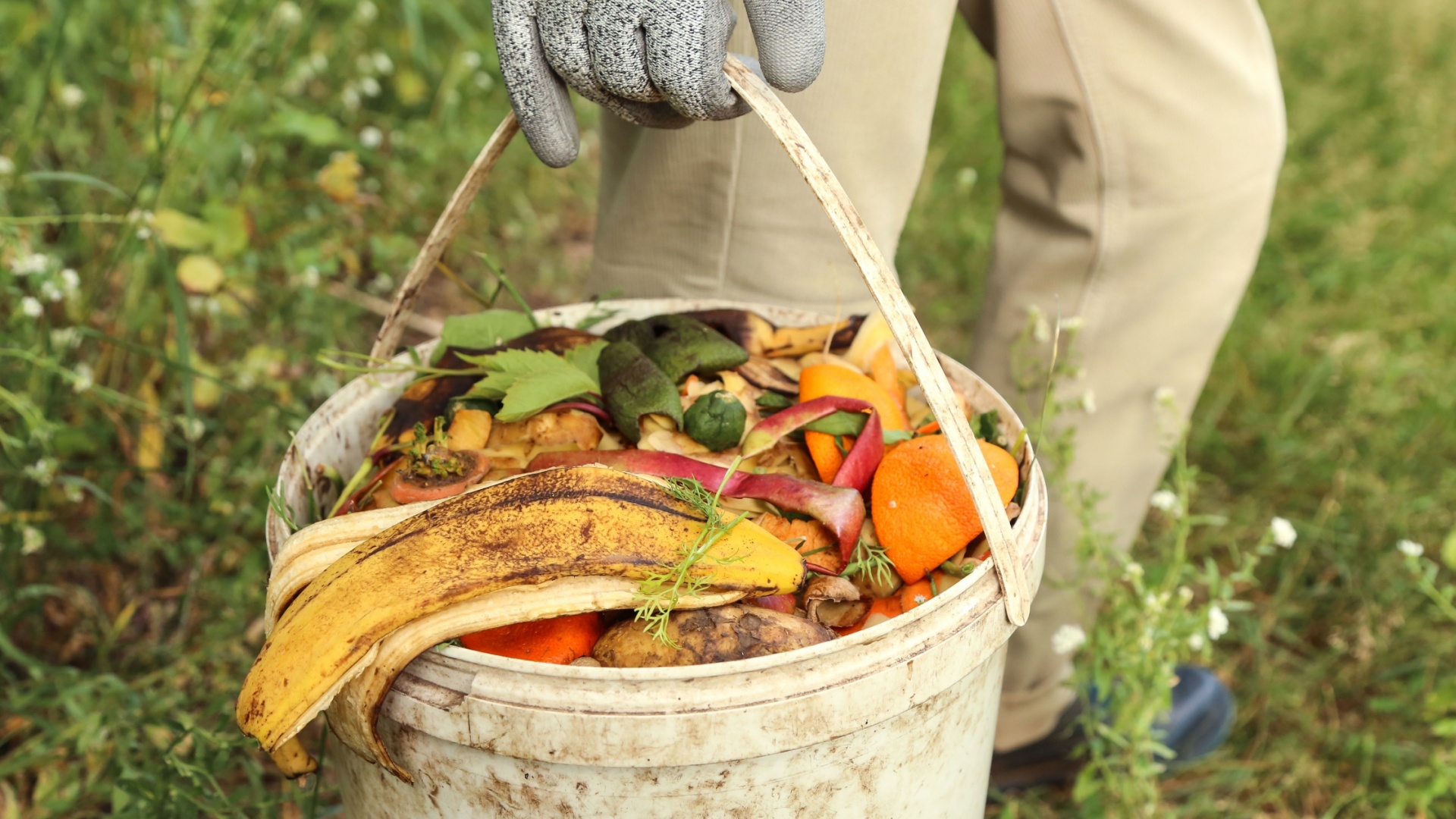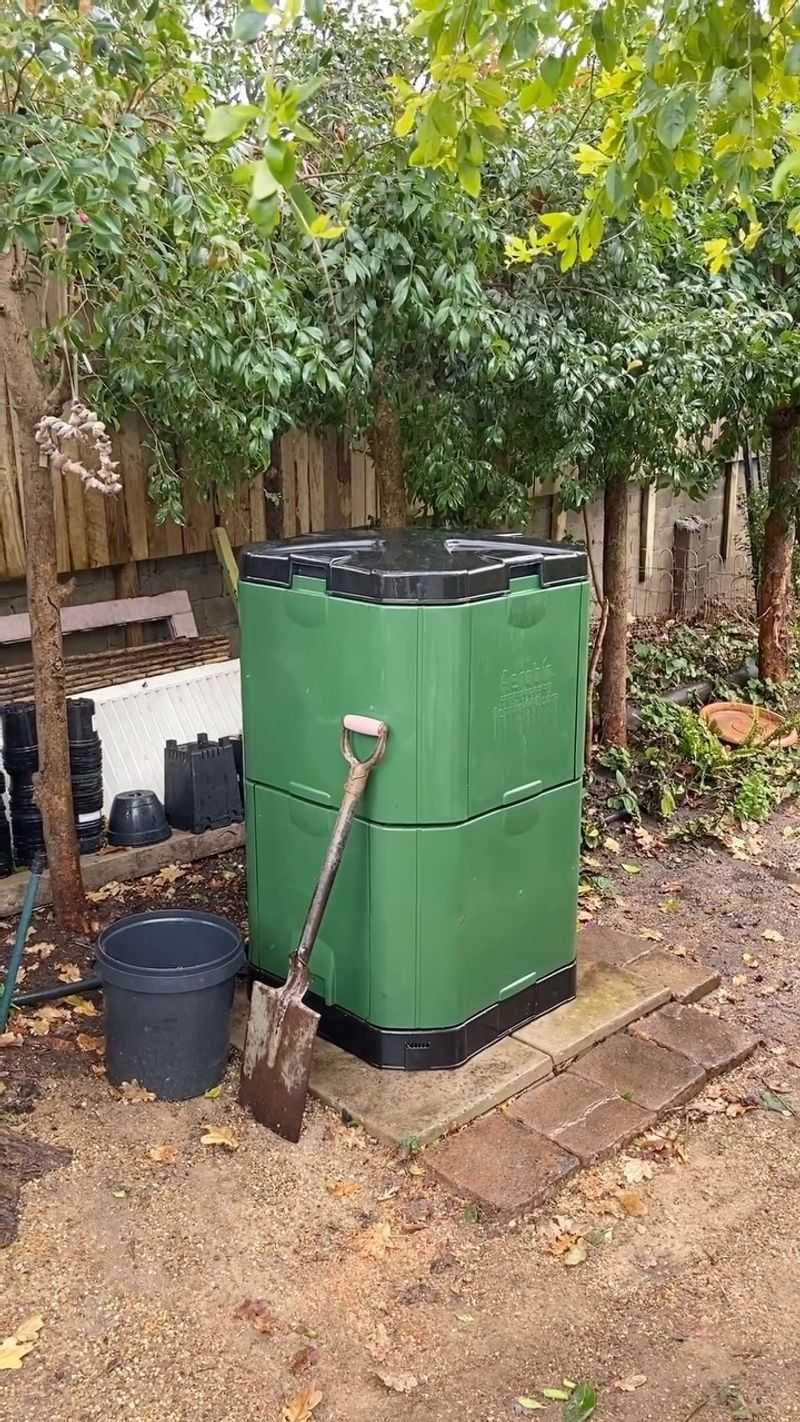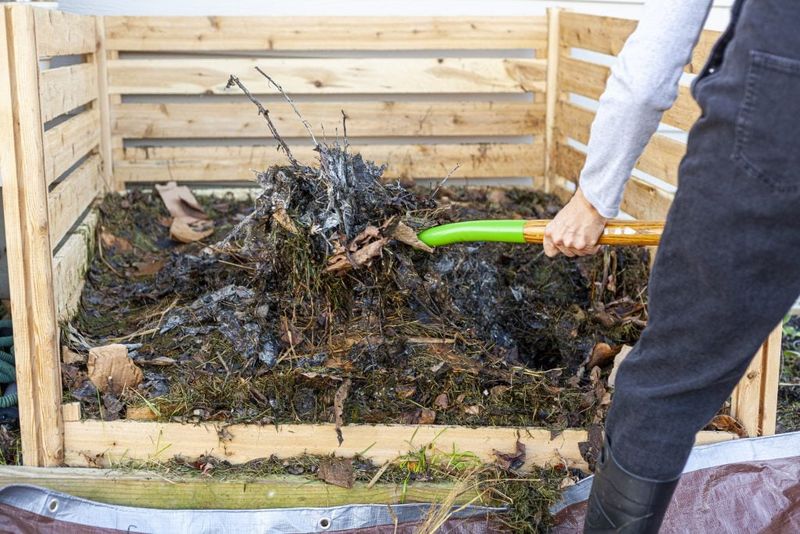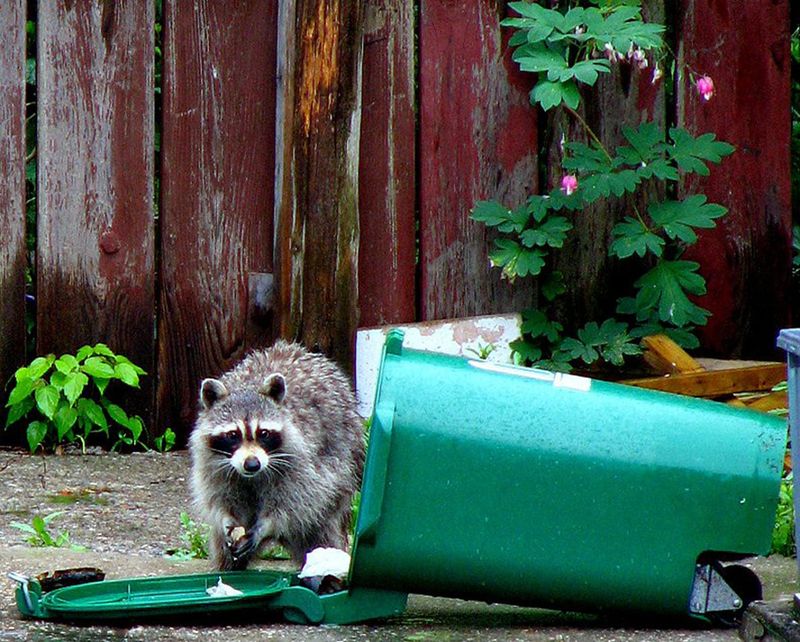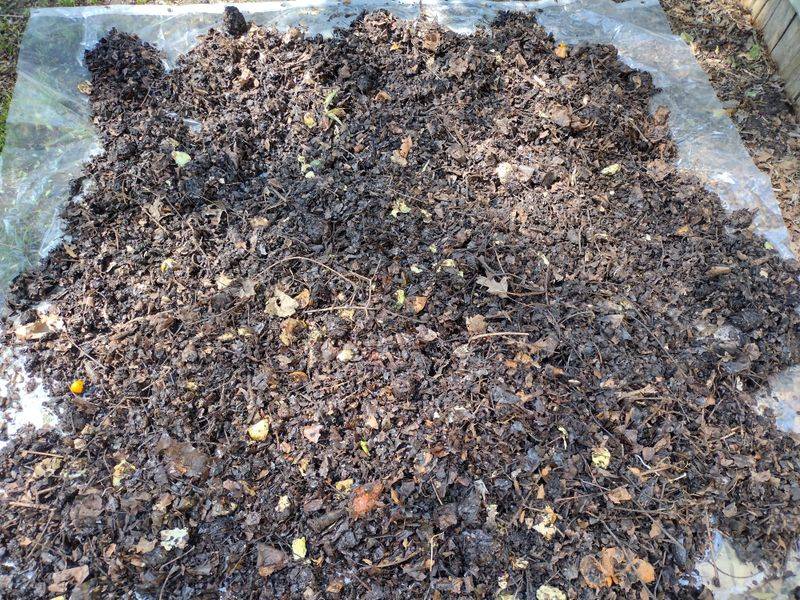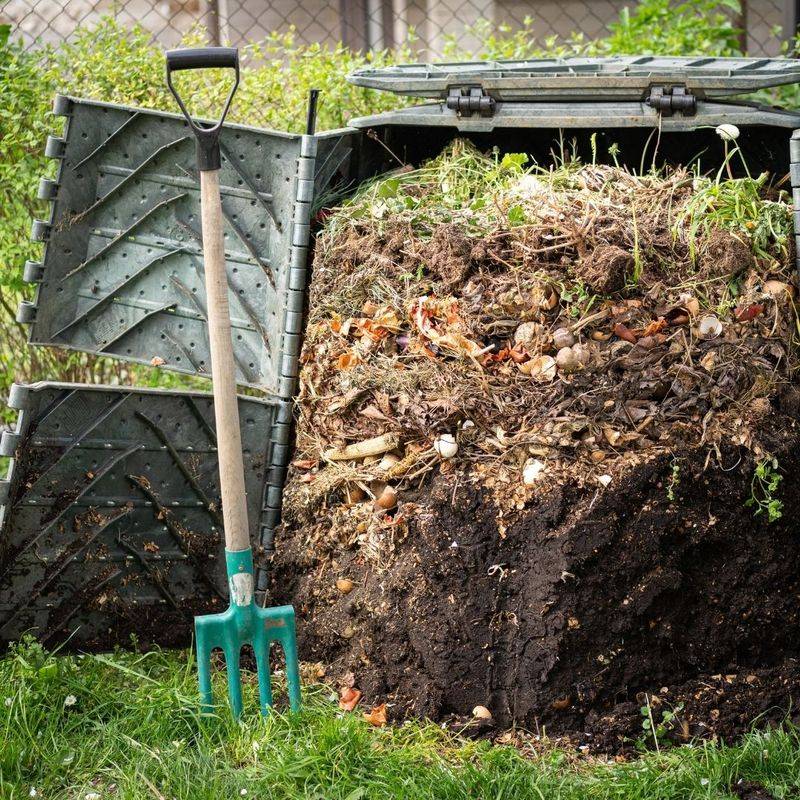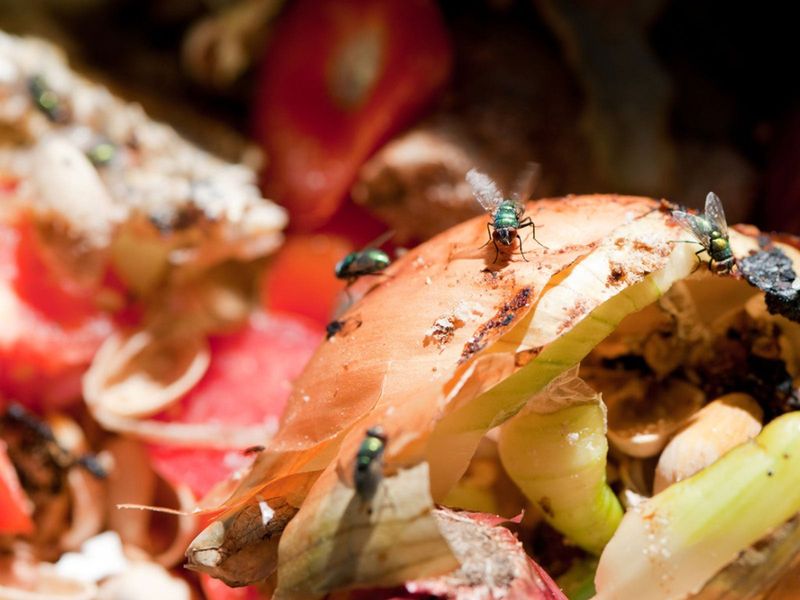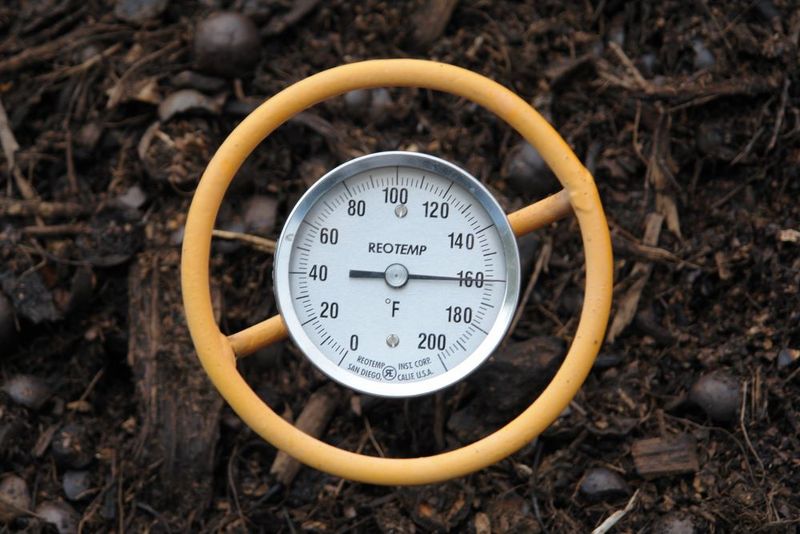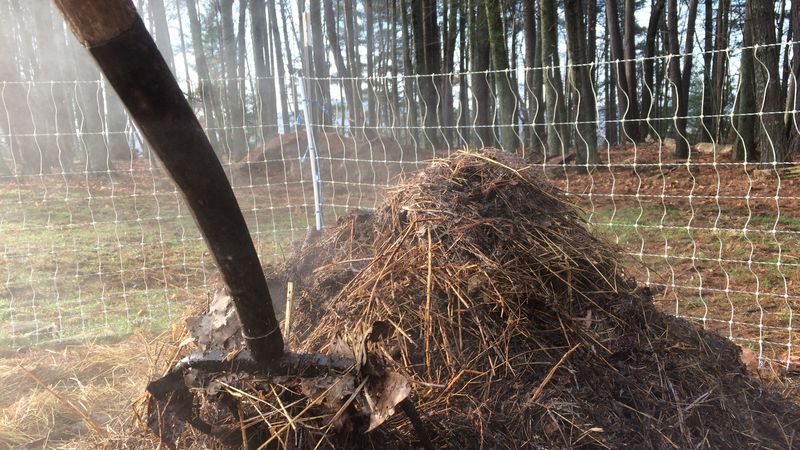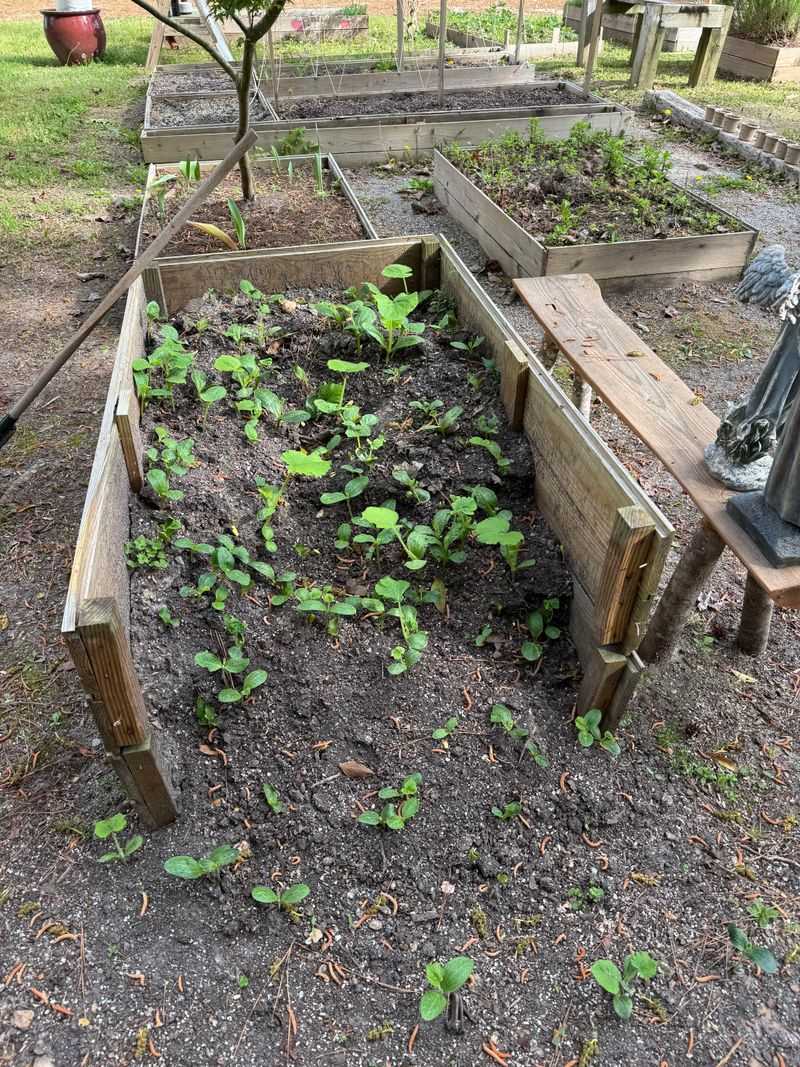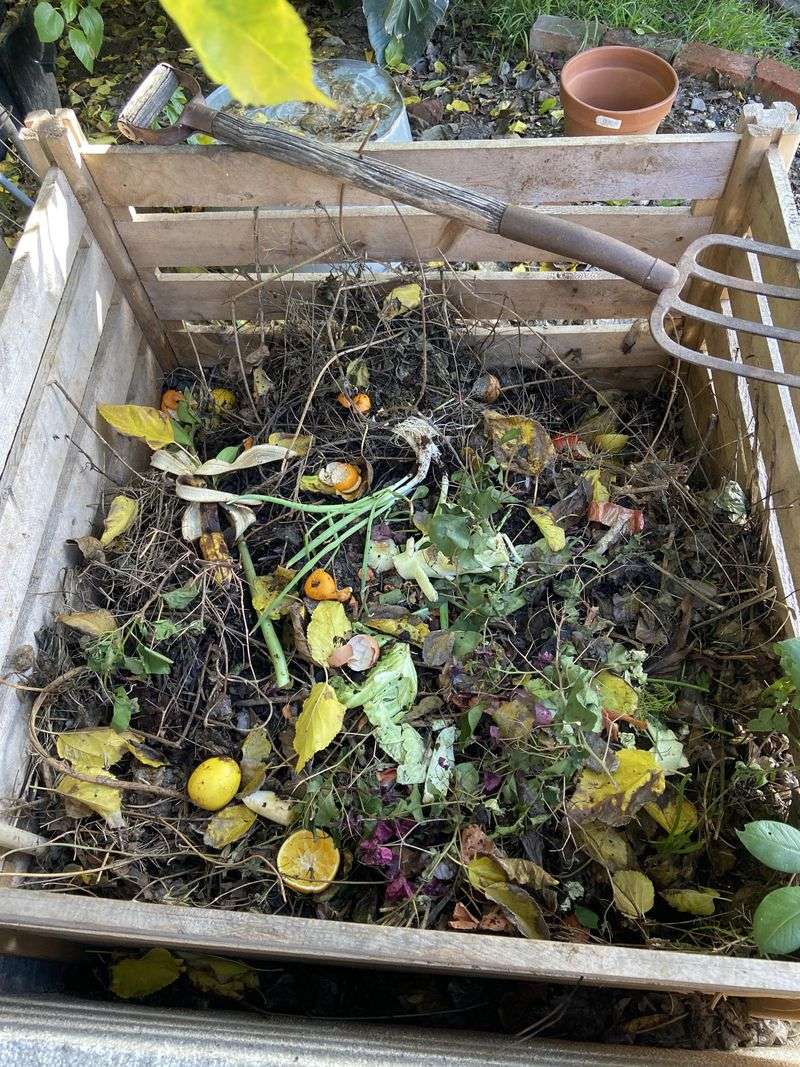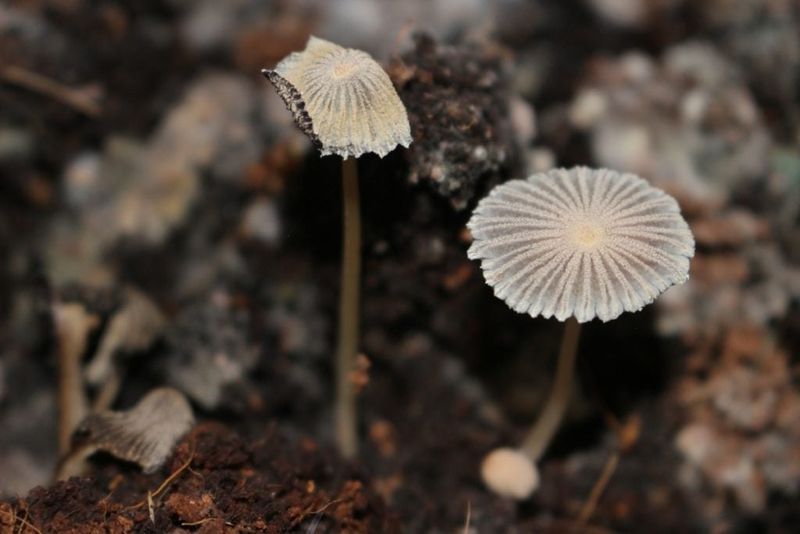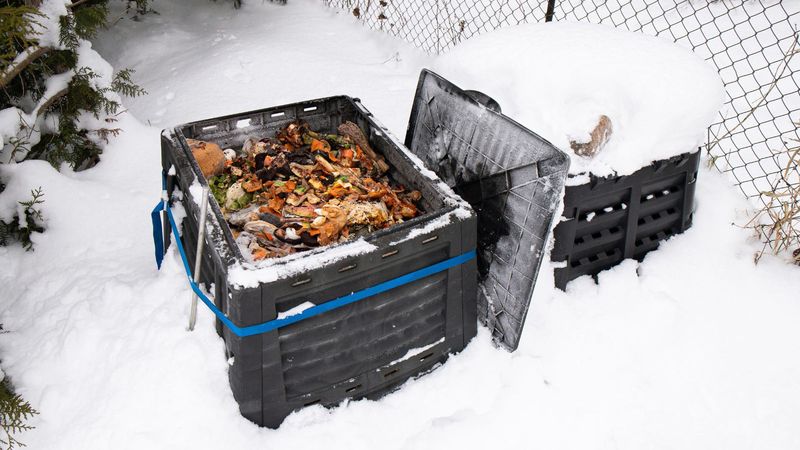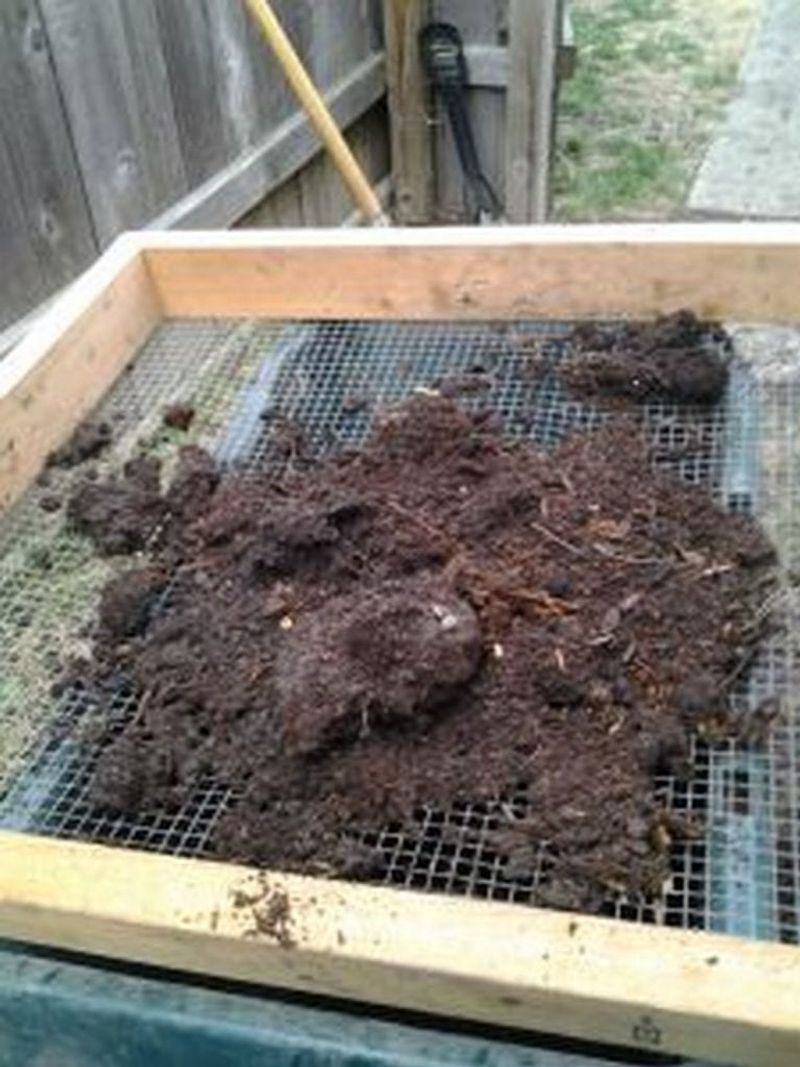Think your compost pile is cooking—but your garden’s still falling flat? You might be turning gold into garbage. From smelly heaps to stubborn scraps, these 13 common composting mistakes could be holding your soil back.
The good news? Each one has a quick fix to get your garden back on track and thriving in no time.
1. Foul Odors That Make Your Neighbors Complain
Your compost heap shouldn’t smell like rotten eggs! That nasty smell usually means there’s too much moisture and not enough air in your pile. The solution is simple – grab a pitchfork and turn your pile to add oxygen.
Adding dry, carbon-rich materials like fallen leaves, shredded newspaper, or cardboard helps soak up excess moisture. For quick improvement, mix in some coarse materials like small twigs or corn stalks to create air pockets throughout your compost.
2. Nothing’s Happening – Compost That Won’t Break Down
Frustrated by a compost pile that seems frozen in time? The decomposition process needs the right balance of ingredients to work properly. Your pile might be too dry, too cold, or missing the right mix of materials. Try moistening the pile until it feels like a wrung-out sponge.
Chop or shred larger materials into smaller pieces to speed things up. Adding a shovelful of garden soil or finished compost introduces helpful microorganisms that jumpstart the breakdown process.
3. Unwelcome Pests Making Themselves at Home
Finding rats, raccoons, or other critters digging through your compost? These uninvited guests are usually after food scraps. The easy fix is to bury fresh kitchen waste in the center of your pile rather than leaving it exposed on top. Consider switching to a closed bin with a secure lid instead of an open pile.
Never add meat, dairy, oils, or bones to your compost – these attract pests like magnets! Turning your pile regularly also discourages animals from setting up permanent homes.
4. Too Wet and Slimy – The Soggy Compost Blues
A soggy, slimy compost pile isn’t just unpleasant – it’s ineffective! Excess moisture pushes out oxygen, slowing decomposition and creating that rotten smell everyone hates. Your pile should feel damp like a wrung-out sponge, not soaking wet.
The fix? Add plenty of dry, carbon-rich materials like dead leaves, straw, shredded paper, or cardboard. These materials absorb moisture while creating air spaces. If your compost area receives heavy rainfall, consider covering it with a tarp that allows airflow but keeps out excess water.
5. Dry as a Desert – When Compost Won’t Retain Moisture
Bone-dry compost is practically preserved rather than decomposing! Microorganisms need moisture to break down organic matter, so without water, everything just sits there. You’ll notice dry, unchanged materials throughout your pile. Water your compost pile until it reaches that perfect damp-sponge consistency.
Adding green materials like fresh grass clippings, vegetable scraps, or coffee grounds increases moisture. In hot climates, consider relocating your bin to a shadier spot to prevent rapid drying, and check moisture levels weekly.
6. Fly Invasion – Battling Fruit Flies and Fungus Gnats
Swarms of tiny flies buzzing around your compost bin are annoying but fixable! These insects, usually fruit flies or fungus gnats, love exposed food scraps and overly wet conditions. Cover fresh kitchen scraps with a layer of leaves, finished compost, or soil immediately after adding them to the pile.
Maintain proper moisture levels by adding dry materials if things get too wet. For indoor composting systems, freezing scraps before adding them kills fly eggs and reduces problems dramatically.
7. Too Hot to Handle – When Compost Overheats
While heat shows your compost is working, temperatures above 160°F (71°C) can kill beneficial microorganisms and actually slow down decomposition. Super-hot compost might even become a fire hazard in extreme cases!
Monitor temperature with a compost thermometer, aiming for 130-150°F (54-65°C). If your pile gets too hot, turn it more frequently to release excess heat. Adding more brown materials (carbon) helps moderate temperature spikes caused by too many nitrogen-rich green materials like grass clippings.
8. Matted Layers That Block Decomposition
Layers of matted materials like grass clippings or wet leaves create impenetrable barriers that block air circulation. These compressed sheets prevent decomposition and create anaerobic pockets that smell terrible.
Break up these matted layers by turning your pile thoroughly. For future additions, mix materials well rather than adding them in thick layers. Grass clippings should be spread thinly or mixed with brown materials immediately. Shredding leaves before adding prevents them from sticking together in dense mats.
9. Weed Seeds Sprouting – Your Compost Growing Plants
Discovering a mini garden growing in your compost? That’s a sign your pile isn’t heating up enough to kill weed seeds. Low-temperature composting (below 130°F) preserves rather than destroys seeds. Build larger piles at least 3 feet in each dimension to generate higher temperatures.
Turn the pile regularly to ensure all materials reach the hot center. For weeds that have already gone to seed, consider hot composting methods or avoid adding them altogether. Some persistent weeds like bindweed should never enter your compost.
10. Imbalanced Carbon-to-Nitrogen Ratio
The secret sauce of successful composting is balancing browns (carbon-rich materials) and greens (nitrogen-rich materials). Too many greens causes smelly, slimy compost. Too many browns results in a pile that just sits there, decomposing at a snail’s pace.
Aim for roughly 3 parts brown materials (leaves, cardboard, paper) to 1 part green materials (food scraps, grass clippings). Keep a stockpile of dry leaves or shredded paper nearby to balance out kitchen scraps. Remember that smaller pieces break down faster, so chop or shred materials when possible.
11. Mold and Fungus Growth – Friend or Foe?
Spotting white, gray, or blue fuzzy patches in your compost might seem alarming, but most molds and fungi are actually helpful decomposers! These organisms break down tough materials like woody stems and cardboard.
While most fungal growth is beneficial, excessive mold can indicate your pile is too wet. Improve air circulation by turning the pile more frequently. Add coarse materials like small twigs to create air pockets. If you’re sensitive to mold spores, wear a mask when turning your compost.
12. Freezing Winter Halts Decomposition
Winter’s chill can turn your once-active compost pile into a frozen block, stopping decomposition in its tracks. Don’t worry – this is temporary and completely normal in cold climates. Insulate your compost bin with straw bales, cardboard, or old blankets to retain heat.
Building larger piles helps maintain core temperatures. Continue adding materials throughout winter – they’ll preserve until spring thaw. For serious winter composting, consider insulated tumblers or indoor methods like vermicomposting with red worms.
13. Finished Compost That’s Still Chunky
Your compost looks almost done, but persistent chunks of wood, eggshells, or corn cobs remain undecomposed. This happens because different materials break down at different rates – some taking months or even years longer than others.
Use a sifting screen to separate finished compost from stubborn chunks. Return the unfinished bits to your active pile for further decomposition. For faster results in the future, chop tough materials into smaller pieces before adding them. Some items like avocado pits and corn cobs might need crushing or grinding first.

